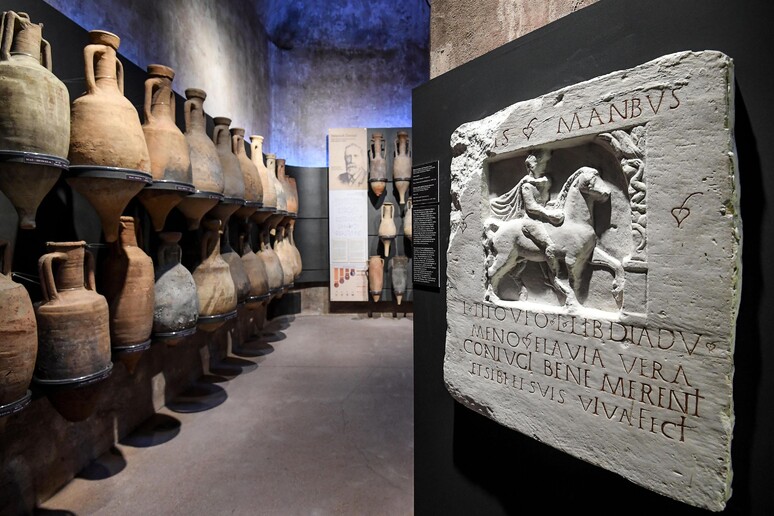A new Rome show on Roman emperor Trajan aims to show his 'pop' side, spanning the senses of being hugely popular with the Roman people and Senate and the original vision of a ruler who left the capital monuments admired through the Renaissance like his famed column and markets, curators said Tuesday.
The show, Trajan, Building an Empire, Creating Europe, runs from Wednesday until September 16 2018 in the run-up to the 1900th anniversary of the death of Rome's first non-Italian ruler, a Spaniard Pliny the Younger called the "best of emperors".
Trajan himself called himself "an ordinary man who lived an exceptional life" and said "I was just the right man in the right place".
The show at his markets, one of the most keenly awaited ones of the year, is the brainchild of Capitoline superintendent Claudio paris Presicce and has been curated by Lucrezia Ungaro, Marina Milella and Simone Pastor.
It charts Trajan's conquests, notably in Dacia, and the high reputation he enjoyed despite, or perhaps because of, a certain sexual laxity and fondness for wine, among other things.
"Trajan," says Parisi Presicce, "was the first emperor appointed on merit and not for any family ties with his predecessor.
"He was a ruler who cared about the needs of his people and a great material and symbolic builder.
"He brought the empire to its maximum extension, but the sense of his conquests is not linked to the concept of submission, but rather that of inclusion".
Trajan himself greets the visitor in a tour that runs backwards 19 years from his tomb.
The show's seven sections including works, casts, models and multimedia exhibits chart the dominant themes of his reign, from the prime role of women including his wife Pompeia Plotina; the major infrastructure consolidating the five million square kilometres of the empire; his battles; Trajan's Forum; and his posthumous fortune.
"It's not a show for specialists but for everyone," said curator Ungaro, with important loans including golden plaster of the villa of Arcinazzo Romano or , for the first time together in 400 years, the two parts of the frieze with cupids and griffins from the Vatican Museum and Berlin - as well as some previously unseen pieces like a colossal hand that has emerged from the bowels of the Trajan Markets museum.
As well, there are sculptures, jewels, models and, from the Museum of Roman Civilisation, the historic casts of Trajan's Column (1861) up close and personal with other monuments of the age like the Arch of Ancona, the bridge over the Danube and a scale reproduction of Trajan's triumph over the Dacians.
On the Via Biberatica, the contemporary installation Columna Mutatio - The Spiral, is by Luminita Taranu. While for the first time there will be c chance to enter in video into inaccessible underground parts of the emperor's villa on the Aventine and into Trajan's Aqueduct that brought water from Lake Bracciano to Trastevere.
"We have today forgotten Trajan's lesson and that of those who built Europe," said Deputy mayor Luca Bergamo.
"Just as we think the condition of social peace in which we live is to be taken for granted.
"That isn't so. reading history is a fundamental way of understanding the times we live in".
ALL RIGHTS RESERVED © Copyright ANSA











